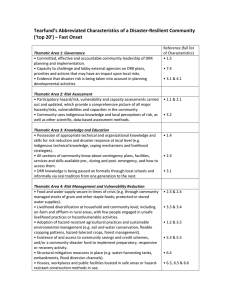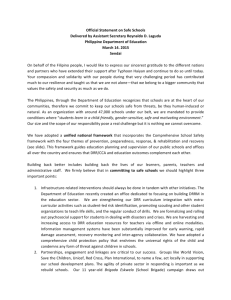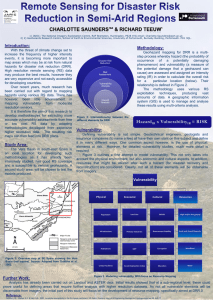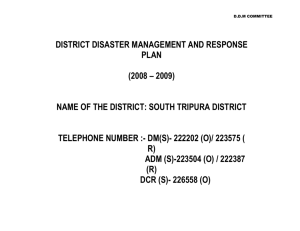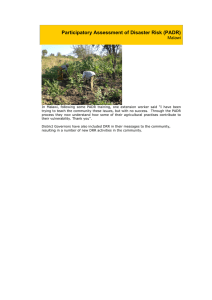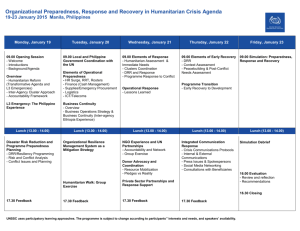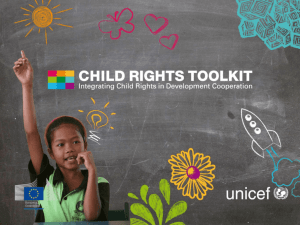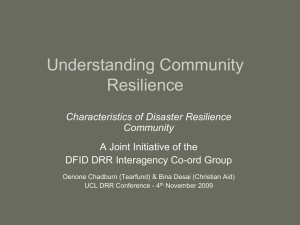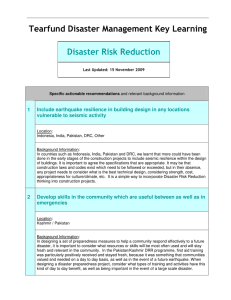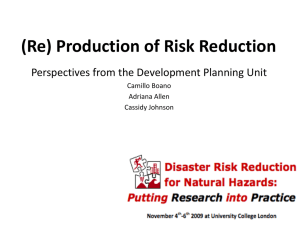Tearfund’s Abbreviated Characteristics of a Disaster-Resilient Community
advertisement
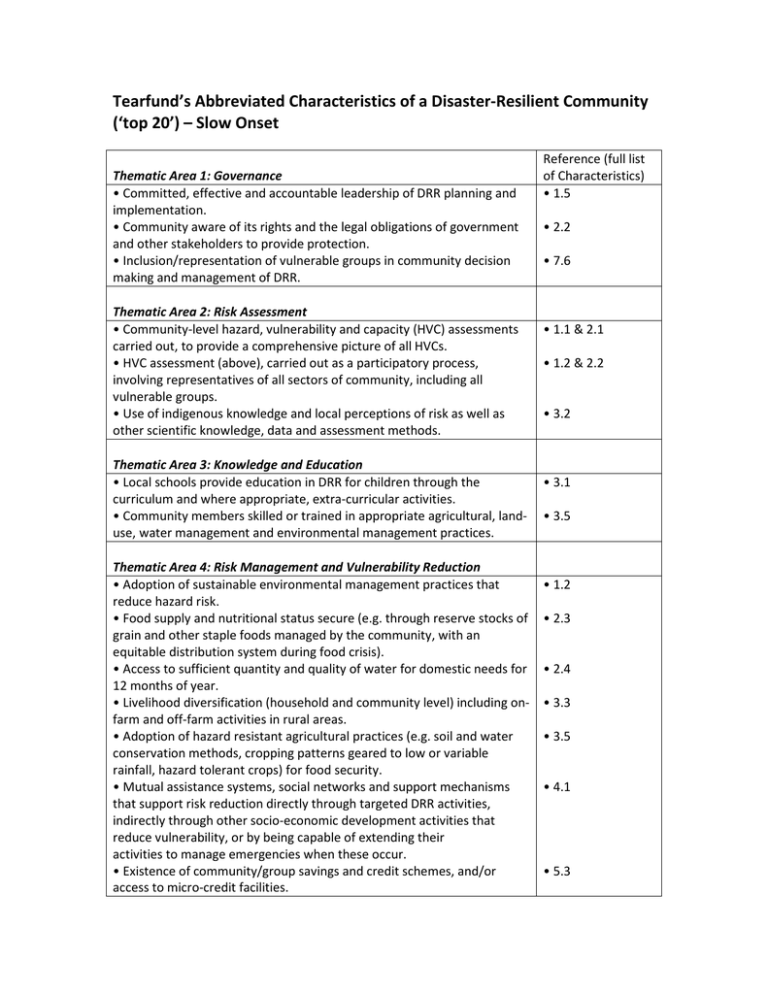
Tearfund’s Abbreviated Characteristics of a Disaster-Resilient Community (‘top 20’) – Slow Onset Thematic Area 1: Governance • Committed, effective and accountable leadership of DRR planning and implementation. • Community aware of its rights and the legal obligations of government and other stakeholders to provide protection. • Inclusion/representation of vulnerable groups in community decision making and management of DRR. Thematic Area 2: Risk Assessment • Community-level hazard, vulnerability and capacity (HVC) assessments carried out, to provide a comprehensive picture of all HVCs. • HVC assessment (above), carried out as a participatory process, involving representatives of all sectors of community, including all vulnerable groups. • Use of indigenous knowledge and local perceptions of risk as well as other scientific knowledge, data and assessment methods. Thematic Area 3: Knowledge and Education • Local schools provide education in DRR for children through the curriculum and where appropriate, extra-curricular activities. • Community members skilled or trained in appropriate agricultural, landuse, water management and environmental management practices. Thematic Area 4: Risk Management and Vulnerability Reduction • Adoption of sustainable environmental management practices that reduce hazard risk. • Food supply and nutritional status secure (e.g. through reserve stocks of grain and other staple foods managed by the community, with an equitable distribution system during food crisis). • Access to sufficient quantity and quality of water for domestic needs for 12 months of year. • Livelihood diversification (household and community level) including onfarm and off-farm activities in rural areas. • Adoption of hazard resistant agricultural practices (e.g. soil and water conservation methods, cropping patterns geared to low or variable rainfall, hazard tolerant crops) for food security. • Mutual assistance systems, social networks and support mechanisms that support risk reduction directly through targeted DRR activities, indirectly through other socio-economic development activities that reduce vulnerability, or by being capable of extending their activities to manage emergencies when these occur. • Existence of community/group savings and credit schemes, and/or access to micro-credit facilities. Reference (full list of Characteristics) • 1.5 • 2.2 • 7.6 • 1.1 & 2.1 • 1.2 & 2.2 • 3.2 • 3.1 • 3.5 • 1.2 • 2.3 • 2.4 • 3.3 • 3.5 • 4.1 • 5.3 • Structural mitigation measures in place – e.g for water harvesting, field bunding or irrigation dams and channels – built using local labour, skills, materials and appropriate technology as far as possible. Thematic Area 5: Disaster Preparedness and Response • Local organizational structures for disaster preparedness or emergency response in place (e.g. disaster preparedness committee) • Community-based and people-centred early warning system in place, which generates timely, trustworthy and understandable warnings of hazards to reach all members of community. • Community and household contingency plans in place for drought, including preservation of key assets (e.g. fodder, water and health of livestock). • Emergency supplies (buffer stocks) in place, managed by community, alone or in partnership with other local organizations (including grain/seed banks). • 6.4 • 1.2 • 2.1, 2.2, 2.3, 2.7 • 3.1 & 3.9 • 4.7
